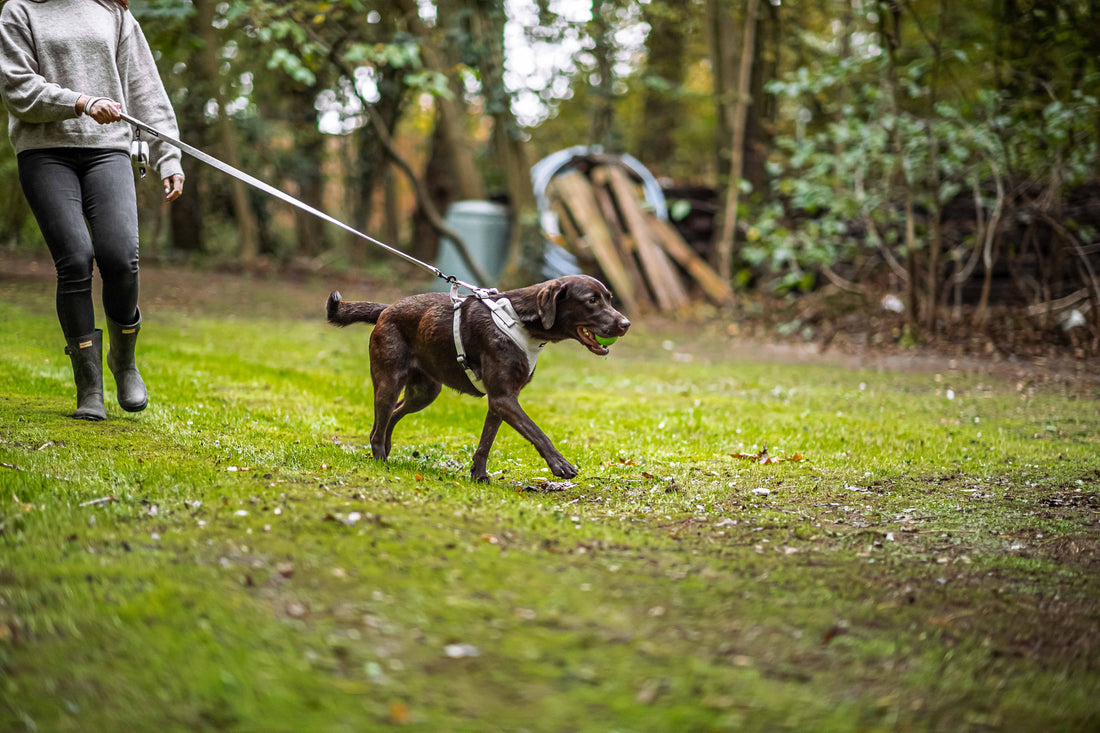
Walking with Reactive Dogs: Tips & Tools That Help
Walking a reactive dog can feel like a real challenge.
Whether it’s barking at other dogs, lunging at cyclists, or getting overwhelmed by busy environments, reactivity can make walks stressful for both you and your dog.
But with the right approach — and a few useful tools — you can enjoy calmer, happier walks together.
Here’s what can really make a difference.
Understand What Reactive Means
A reactive dog isn’t "bad" — they’re simply struggling to cope with something in their environment.
Their behaviour often comes from fear, anxiety, or over-excitement.
Recognising that reactivity is emotional (not ‘naughty’) is the first step to helping your dog.
Choose the Right Walking Gear
The right kit can give you more control and make walks safer for both you and your dog.
- Secure harness: A well-fitted dog harness is safer than relying on a collar alone, especially if your dog lunges.
-
Strong lead: A sturdy dog lead that’s easy to grip gives you better control.
Avoid retractable leads for reactive dogs — they offer too little control at critical moments. - Head collars: In some cases, a head collar (like a Halti) can help manage strong pullers, but they must be introduced gently and correctly.
Always check that your equipment is in good condition before heading out.
Pick Your Walking Times and Routes Wisely
When walking a reactive dog, timing and location matter more than ever.
- Walk during quieter hours (early mornings or later evenings)
- Choose wide-open spaces where you can give other dogs or people a wide berth
- Avoid busy parks or streets during peak times
Giving your dog space to decompress makes a huge difference in how they feel and react.
You might find our dog walking accessories useful to keep essentials ready and hands free during walks.
Teach an Emergency U-Turn
One of the best skills for walking a reactive dog is a quick U-turn.
When you spot a trigger (like another dog), calmly say your U-turn cue ("This way!" or "Let’s go!") and turn around, encouraging your dog to follow.
Reward them heavily for turning with you — treats, praise, whatever they love.
It teaches your dog that moving away from scary things leads to good things.
Practise this skill regularly when nothing stressful is happening, so it's second nature when you need it.
Use Treats to Build Positive Associations
Carry high-value treats (think chicken, cheese or something really exciting).
When your dog notices something that would normally cause a reaction, but stays calm, immediately reward them.
This helps your dog learn:
“That dog/cyclist/stranger appeared — and something good happened!”
Over time, you’re helping to change their emotional response.
Don’t Push Too Hard
It’s tempting to want to "get your dog used to it," but pushing a reactive dog too fast usually makes things worse.
Always work at your dog’s pace. If they’re showing early signs of stress (stiff body, staring, lip licking), create more distance or call it a day.
Short, positive walks are far more beneficial than long, overwhelming ones.
Know When to Get Professional Help
Sometimes reactivity needs a bit more support.
A qualified force-free trainer can help you build a tailored plan to make life easier and safer for both you and your dog.
